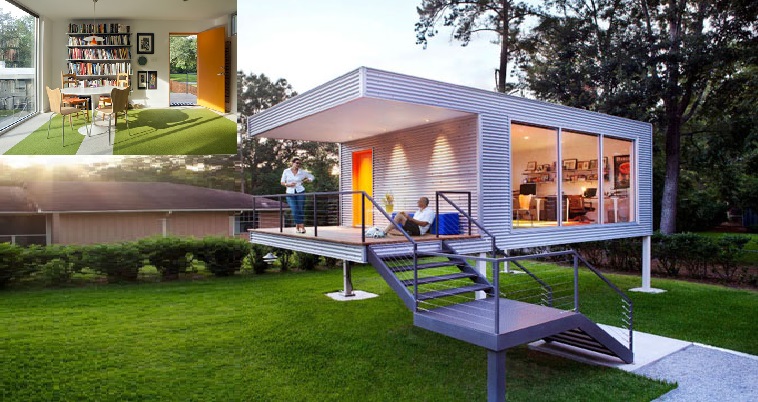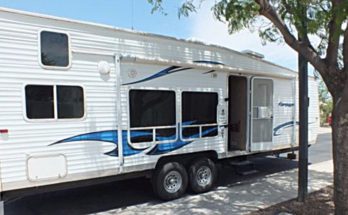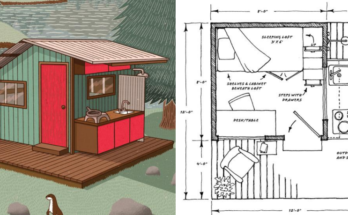Making good use of corrugated metal sheets and large windows, this couple built a modular tiny house structure in their back yard. Why? That’s one of the interesting things about what they did. They wanted to add space to their house — in this case the reason was they wanted more room for office / work space but I’m pretty sure prefab and modular house enthusiasts out there will also see the potential as a standalone small house or guest house — so, instead of building onto their place and changing the footprint, they built this modular unit in their back yard.
First I want to take a look at the basic design and building features, because that’s what most prefab / modular home shoppers will maybe be most interested in, nomatter where they buy their structure from. The use of corrugated metal sheets here is pretty good. It looks like a material made for stylish siding when it’s used this way. They also have large windows, a front porch, a metal stairway that is attached to the porch railing, and, of course, its raised off the ground.
Now I’m not sure how many of you prefab enthusiasts out there immediately looked at that raised structure to see what kind of room there was under it for easy lawn-mowing, but I’m going to guess around half of you at least. It doesn’t look too bad for mowing.
Dimension-wise, this tiny house structure has a 16X20 interior. The deck is another 16X8 feet. The structure is a 320 square foot one.
Some of you might be thinking, “Why not use that space underneath”? Unless its situated somewhere where builders must raise their structures up for flooding reasons, that space under the tiny house could be used either as a recreation area (if they lifted the structure up higher) or a parking area, or they could build the structure lower (even adding a second story). Even from an economic perspective, this consideration might make sense to most prefab or modular home builders. Because the value of this structure if it was 7 feet up off the ground instead of 4 would be increased.
If you were wanting to put a living area in on the first floor in a flood area (where you might be considering an elevated prefab that looks like this one), you might want to know that you can’t actually have what building codes consider “living spaces” there, but you can have recreation rooms, outdoor kitchens, hammock areas (instead of bedrooms, kitchens, or living rooms).
To see more from Asul, find them in the Building Homes and Living directory.



